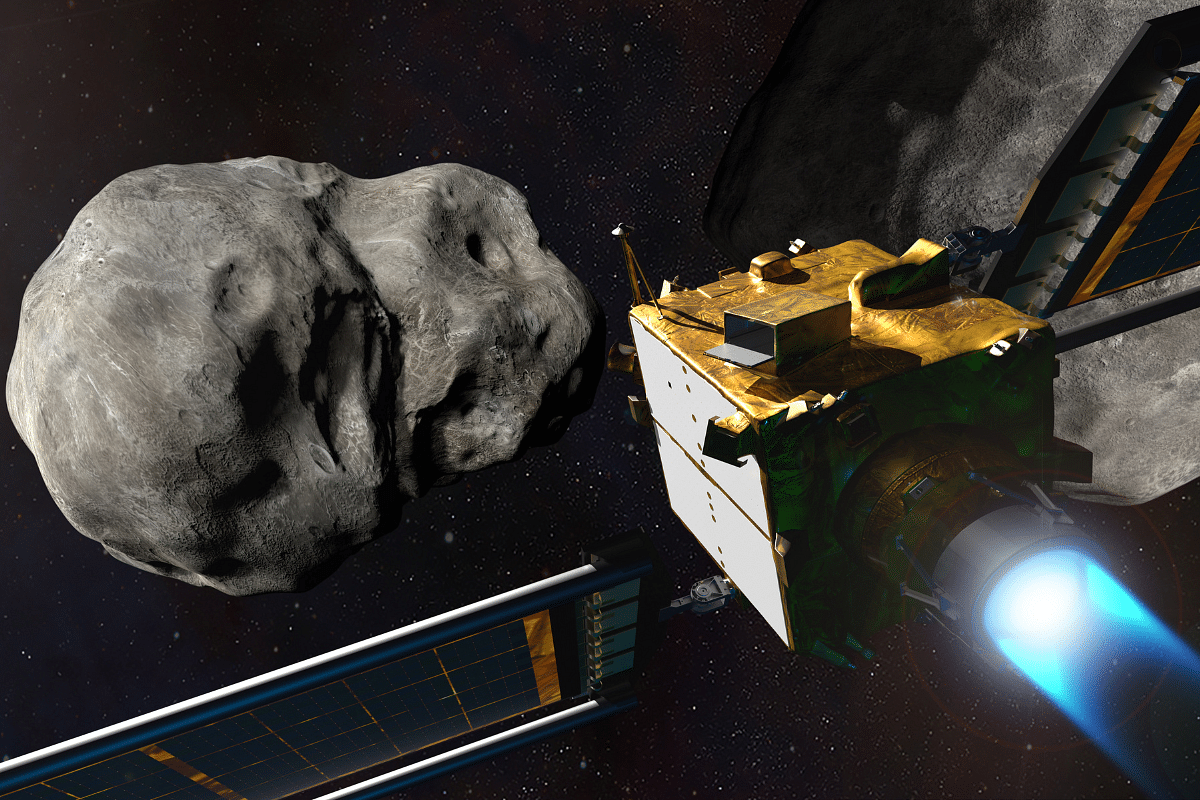Science
NASA’s DART Spacecraft: How Did Earth’s First Test Of Planetary Defence Turn Out?
- The smack caused a definite change in the 160-metre-wide asteroid’s orbit.

Illustration of DART, from behind the NEXT–C ion engine. (Photo: NASA/Johns Hopkins APL)
The National Aeronautics and Space Administration (NASA) smacked an asteroid with a spacecraft to test out if a potentially life-threatening asteroid in the future could be moved off course.
The Double Asteroid Redirection Test (DART) spacecraft lifted off for the skies on 24 November 2021 at 6:21 UTC (11:51 IST) on board a SpaceX Falcon 9 rocket from California’s Vandenberg Space Force Base.
Its target was the asteroid Dimorphos, which is pretty big at about the size of a football stadium.
This mission was to mark the world’s first demonstration of planetary defence technology. It was an attempt to move an asteroid in space. (In defence of this poor asteroid, it wasn’t on course to strike us.)
The spacecraft-asteroid collision occurred, just as planned, last month on 26 September, after a 10-month journey. The smash left a trail of debris stretching thousands of kilometres.
The results came in about a couple weeks later, on 11 October, after the data was analysed — the smack caused a definite change in the 160-metre-wide asteroid’s orbit.
Astronomers using ground-based telescopes kept an eye on the change in orbit period. Several images were captured and shared as well, helping scientists understand the orbit change resulting from DART’s impact.
While Dimorphos earlier took 11 hours and 55 minutes to orbit its larger parent asteroid, Didymos, now it will take 11 hours and 23 minutes after the successful intentional kinetic impact.
The asteroid’s orbit has been shortened by 32 minutes, with a margin of uncertainty at plus or minus 2 minutes. NASA had defined a minimum successful orbit period change of Dimorphos as change of 73 seconds or more. The expectation of researchers was a shortening of orbit by about 1 per cent, or roughly 10 minutes. So, the result we got is success as clear as day.
The data is still coming in from astronomers who are using ground-based telescopes. The attempt is to improve the precision of the orbit period change figure.
The lingering aftermath of DART’s asteroid impact was visible in new images from NASA’s Hubble Space Telescope, released on 20 October. Hubble made 18 observations of the system after the impact. Two tails of dust ejected from the Didymos-Dimorphos asteroid system could be seen in the captures.
Dimorphos and Didymos will continue to be subjects of study, as roughly four years later, the European Space Agency’s Hera project will conduct detailed surveys of the asteroid pair, with a particular focus on the crater left by DART’s collision and a precise measurement of Dimorphos’ mass.
“Planetary Defense is a globally unifying effort that affects everyone living on Earth,” said Thomas Zurbuchen, associate administrator for the Science Mission Directorate at NASA, after the asteroid impact.
Indeed! The dinosaurs would be proud of us now.
Support Swarajya's 50 Ground Reports Project & Sponsor A Story
Every general election Swarajya does a 50 ground reports project.
Aimed only at serious readers and those who appreciate the nuances of political undercurrents, the project provides a sense of India's electoral landscape. As you know, these reports are produced after considerable investment of travel, time and effort on the ground.
This time too we've kicked off the project in style and have covered over 30 constituencies already. If you're someone who appreciates such work and have enjoyed our coverage please consider sponsoring a ground report for just Rs 2999 to Rs 19,999 - it goes a long way in helping us produce more quality reportage.
You can also back this project by becoming a subscriber for as little as Rs 999 - so do click on this links and choose a plan that suits you and back us.
Click below to contribute.
Latest